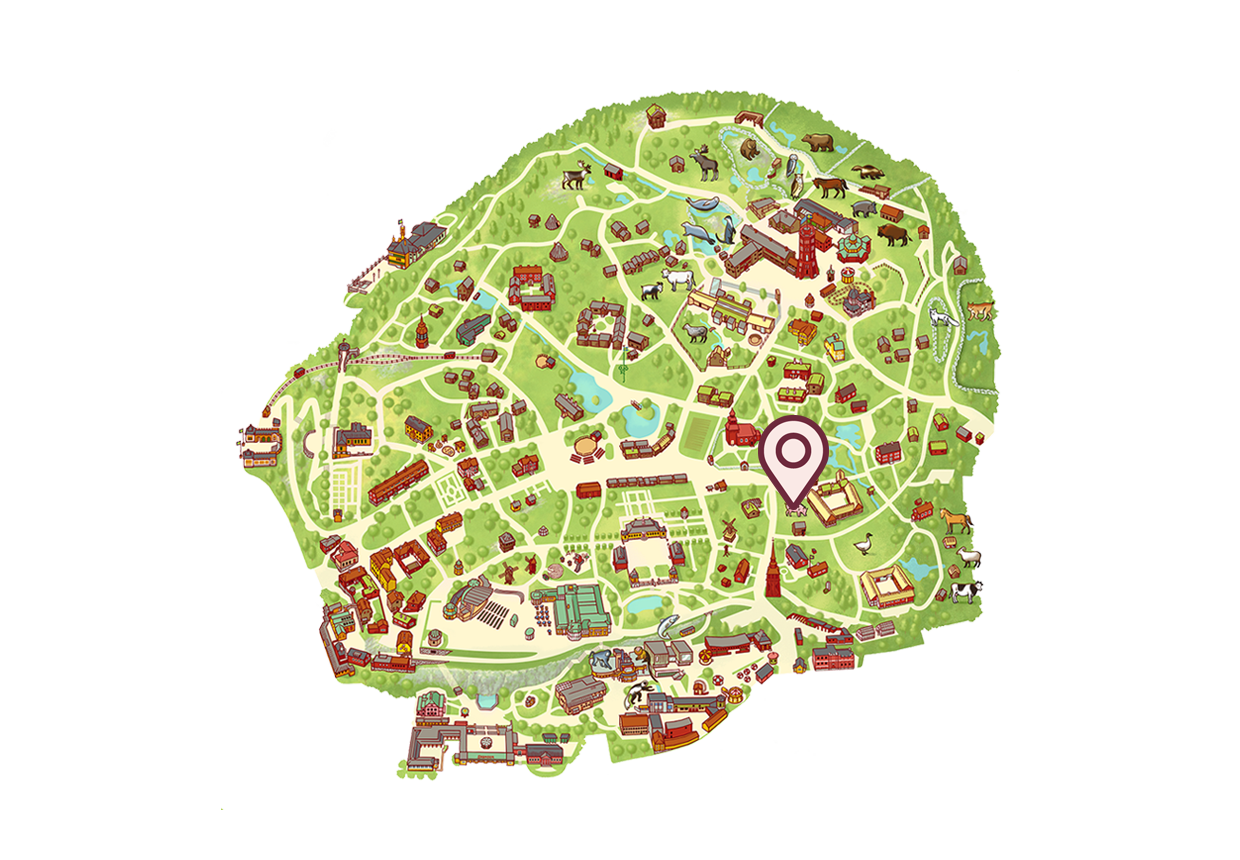- See and do
- The Zoo
- Animals at Skansen
- Linderöd pig
Linderöd pig
The Linderöd pig is happiest outdoors, even in the winter. It has retained its resilience to a cold climate. The Linderöd pig was close to extinction, but was saved by Skåne Zoo Park in the 1950s.
-
Pigs are social animals, and for much of the year form groups of sows and piglets with a strong hierarchy – the herd always follows its leader sow. The pig’s natural social characteristics have made it easy to tame and keep as a domestic animal.
-
Faktaruta om linderössvin
Scientific name:Sus scrofa domestica
Order:Even-toed ungulates
Family:Suidae
Weight:Male (boar) approx. 250 kg, female (sow) approx. 150 kg
Height at the withers:Approx. 1 metre
Sexual maturity:1–1.5 years for sows
Breeding season:Usually autumn
Gestation:Approx. 115 days
Number of young:4–12 piglets
Lifespan:8–10 years, sometimes up to 20 years
Eats:Mostly plants
Number in Sweden:Approx. 300
-
Round body and sturdy legs
The Linderöd pig is not as long in the body as modern breeds. It has a slightly rounded body shape with strong, sturdy legs. It is black and white against a white, grey or brown base colour. The white animals usually have large black spots, while the brown ones have many small spots instead. Its ears can vary in size, but are usually medium-sized and slightly protruding. Its snout is straight and well developed.
Happiest outdoors – all year round
The Linderöd pig thrives when outdoors, even in winter, and has retained its natural hardy behaviour. It eats plants, as well as worms and larvae, and works the soil and fertilises it.
This ancient rare breed grows much more slowly than porker pigs, but they are hardy and good at finding their own food.
Domesticated pigs have been a feature of Swedish homes and farms for thousands of years. Our domesticated pigs come from the wild boar, which originated in Europe, southern Asia and Africa. There have been domesticated pigs in Sweden for about 4,500 years. They were brought as domestic animals by people who had come to Sweden, and became highly valued.
Conservation work
The Linderöd pig originates from the old Swedish forest pig that roamed the beech and oak forests of southern Sweden until the end of the 19th century. The Linderöd pig was almost completely extinct in Sweden before the remaining pigs, a few mottled pigs of an old breed from Linderöd, were cared for by Skåne Zoo Park in 1952.
-
Native breeds
Native breeds are populations of domesticated animals that have lived for so long in the same area that they have adapted to the local environment and its specific conditions. Swedish native breeds have declined in number, but there is a growing focus on efforts to preserve them as they are an important genetic resource and part of our cultural heritage.
Find out more about Swedish native breeds.
You can find the Linderöd pig here
